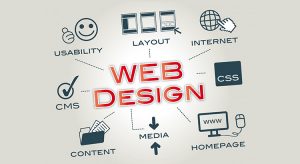Crafting a captivating website that captivates your visitors can be a challenging task, but fear not – with these web design tips, you can truly transform your online presence. From the strategic use of Color Psychology to ensure a lasting impact to mastering Responsive Design for seamless viewing on any device, these techniques will undoubtedly elevate your website’s appeal. But remember, there’s one crucial factor you can’t afford to overlook.

Color Psychology for Impact
To make a lasting impression with your website, harness the power of color psychology for impact. Choose colors that reflect your brand identity and evoke the right emotions in your audience. For example, blue can convey trust and professionalism, while red grabs attention and creates urgency. Remember, colors can influence how visitors perceive your site, so use them strategically to enhance user experience and drive engagement.
Responsive Design for All Devices
Ensure your website adapts seamlessly to all devices with responsive design. Your audience expects a smooth experience whether they’re on a desktop, tablet, or phone. Make sure your content automatically adjusts to different screen sizes. This way, users can easily navigate and access your site no matter how they’re viewing it. Responsive design not only enhances user experience but also boosts your website’s credibility and professionalism.
User-Friendly Navigation Strategies
Adapt your website’s navigation to guide users effortlessly and intuitively through your content with user-friendly strategies. Keep menus simple and organized, using clear labels and logical categories. Implement search functionality for quick access to specific information. Utilize breadcrumb trails to show users where they are on your site. Make sure your navigation is consistent across all pages for a seamless browsing experience.
Visual Hierarchy Techniques
Enhance your website’s appeal and user engagement by mastering visual hierarchy techniques. Capture attention with bold headlines, use contrasting colors for important elements, and ensure a clear flow from top to bottom. Utilize larger fonts for headings, guiding users through content effortlessly. Employ white space strategically to give breathing room to essential information. By implementing these techniques, you can create a visually stunning website that captivates your audience instantly.


